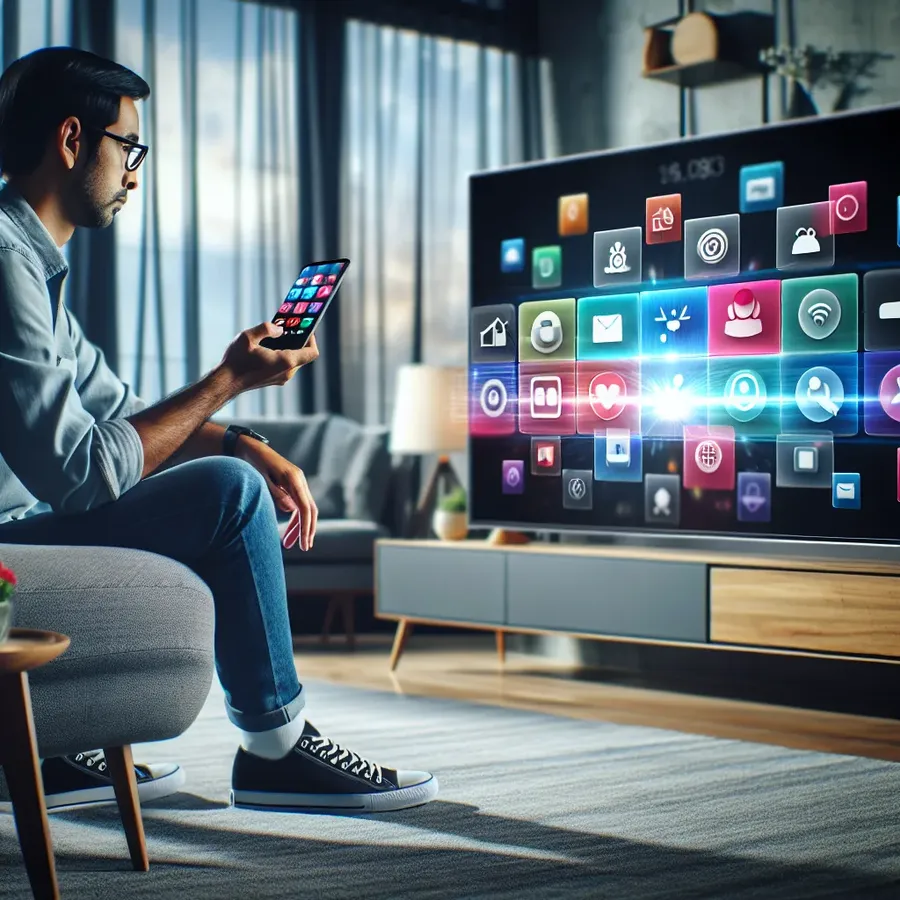Effortlessly Mirror Your Phone in Minutes
Learn how do you mirror a phone easily with our step-by-step guide. Share your screen and enjoy seamless connectivity today!

In today’s tech-savvy world, the ability to mirror a phone has become increasingly relevant, whether for personal use or professional tasks. With a few simple steps, you can replicate your smartphone’s display onto another device, offering a seamless way to share content, troubleshoot issues, or simply enjoy media on a larger screen. Unlike the complexities often associated with tech processes, mirroring a phone can be straightforward and accessible to everyone. So, how do you mirror a phone without any hassle?
Understanding Phone Mirroring
Before diving into the methods, let’s clarify what phone mirroring entails. Essentially, phone mirroring allows you to display your phone’s screen on another device, such as a computer, tablet, or smart TV. This can be done through various methods, each with its own set of tools and requirements.
Why Mirror a Phone?
Why might someone want to mirror a phone? Here are a few reasons:
- Presentations: Share your phone’s screen during meetings.
- Media Viewing: Enjoy videos or photos on a larger screen.
- Troubleshooting: Allow tech support to view your phone’s issues.
- Monitoring: Parents can keep an eye on their children’s device usage.
Methods to Mirror a Phone
Using Built-in Features
For Android Devices
Most modern Android phones come with built-in mirroring capabilities:
- Google Cast: This feature allows Android users to cast their screen to any compatible device. Ensure both devices are on the same Wi-Fi network, then navigate to
Settings > Connected devices > Castand select your target device. - Smart View: Some manufacturers, like Samsung, offer Smart View, which lets you mirror your phone to a smart TV. Simply swipe down from the top of your screen and tap on Smart View.
For iOS Devices
Apple users can utilize AirPlay:
- Ensure your iPhone and the receiving device are connected to the same Wi-Fi.
- Open the Control Center and select
Screen Mirroring. - Choose the target device from the list.
Third-Party Apps
If built-in options aren’t available, several apps can facilitate phone mirroring. These apps often provide additional features such as file transfers or remote control capabilities.
- Reflector: This app supports both Android and iOS devices, providing a smooth mirroring experience.
- AirDroid: Not only does it mirror your screen, but it also allows you to manage your phone’s files and notifications from your computer.
Using a Forest VPN for Secure Mirroring
A less conventional yet highly secure method is employing a VPN like Forest VPN for your mirroring needs. By routing your connection through a VPN, you ensure an encrypted and private mirroring session, which is particularly beneficial if you’re working with sensitive data.
Troubleshooting Common Issues
Sometimes, mirroring doesn’t go as smoothly as planned. Here’s a quick troubleshooting guide:
- Connection Problems: Ensure both devices are on the same Wi-Fi network and reboot your devices.
- Laggy Performance: Close unnecessary apps running in the background to free up resources.
- Incompatible Devices: Verify compatibility before attempting to mirror; some older devices may not support mirroring features.
Real-World Testimonials
“Mirroring my phone to my smart TV has transformed my media experience. I can now enjoy my favorite shows on the big screen without hassle.” – Emily R.
“As a tech support professional, phone mirroring allows me to assist clients more effectively by diagnosing issues in real time.” – John D.
Tips for an Optimal Mirroring Experience
- Check Compatibility: Always ensure your devices are compatible with the mirroring method you choose.
- Stable Internet Connection: A strong and stable Wi-Fi connection is crucial for seamless mirroring.
- Keep Software Updated: Regular updates can fix bugs and improve performance.
Conclusion
Mirroring a phone doesn’t have to be a daunting task. Whether you’re using built-in features, third-party apps, or Forest VPN for enhanced security, the process can be straightforward and rewarding. By understanding the available options and their benefits, you can effortlessly share your screen with another device, making your digital interactions more engaging and efficient.
How do you mirror a phone
To mirror your phone, follow these steps:
For Android:
- Google Cast: Go to
Settings>Connected devices>Cast. - Smart View: Swipe down and select Smart View.
For iOS:
- AirPlay: Open Control Center and tap
Screen Mirroring.
Enhance Security with Forest VPN
Using Forest VPN while mirroring ensures your connection is secure, protecting your data during the process. This is especially important when sharing sensitive information.
Ready to start mirroring securely? Get Forest VPN now!
FAQs about Phone Mirroring
Can someone mirror your phone without ever physically having it, just your number?
Yes, it is possible for someone to mirror your phone using malware or specialized spyware that targets your device via its phone number. Legitimate mirroring methods typically require physical access or your Google and iCloud credentials.
What are some built-in features for mirroring a phone?
For Android devices, options like Google Cast and Smart View allow users to mirror their screens to other compatible devices. iOS users can utilize AirPlay to mirror their device’s screen to Apple TVs or compatible smart TVs.
Are there third-party apps recommended for phone mirroring?
Yes, apps such as Reflector and AirDroid provide robust features for mirroring phone screens. They allow not only screen mirroring but also file management and notifications access.
What should I do if I encounter connection problems while mirroring?
If you experience connection issues, ensure both devices are connected to the same Wi-Fi network. Restarting both devices can also help resolve most connectivity problems.
Is it possible to mirror a phone without the user knowing?
Yes, it’s possible to mirror a phone without the owner’s knowledge using spy apps like Spynger, which features a stealth mode. However, it is essential to be aware of the ethical and legal implications of doing so.
